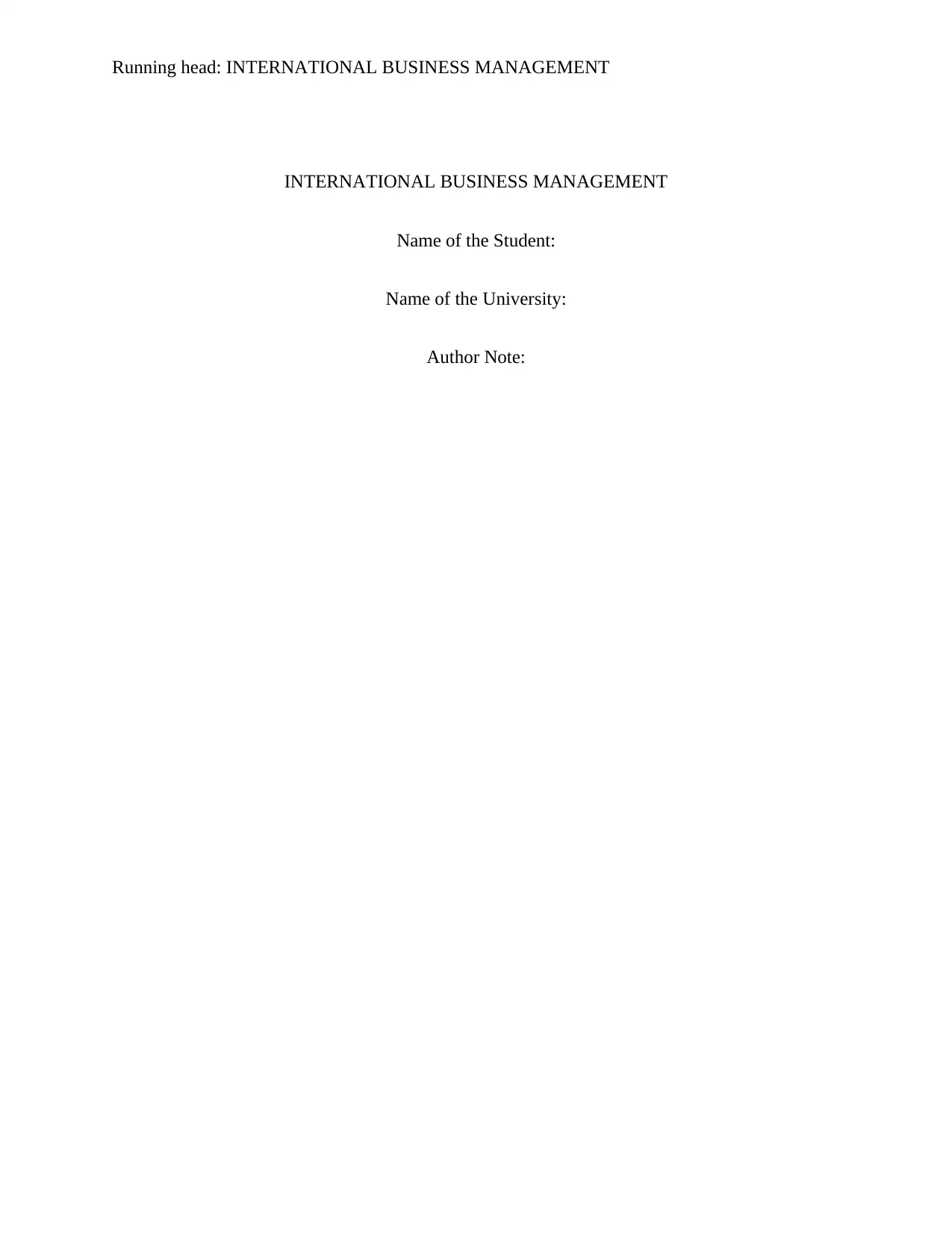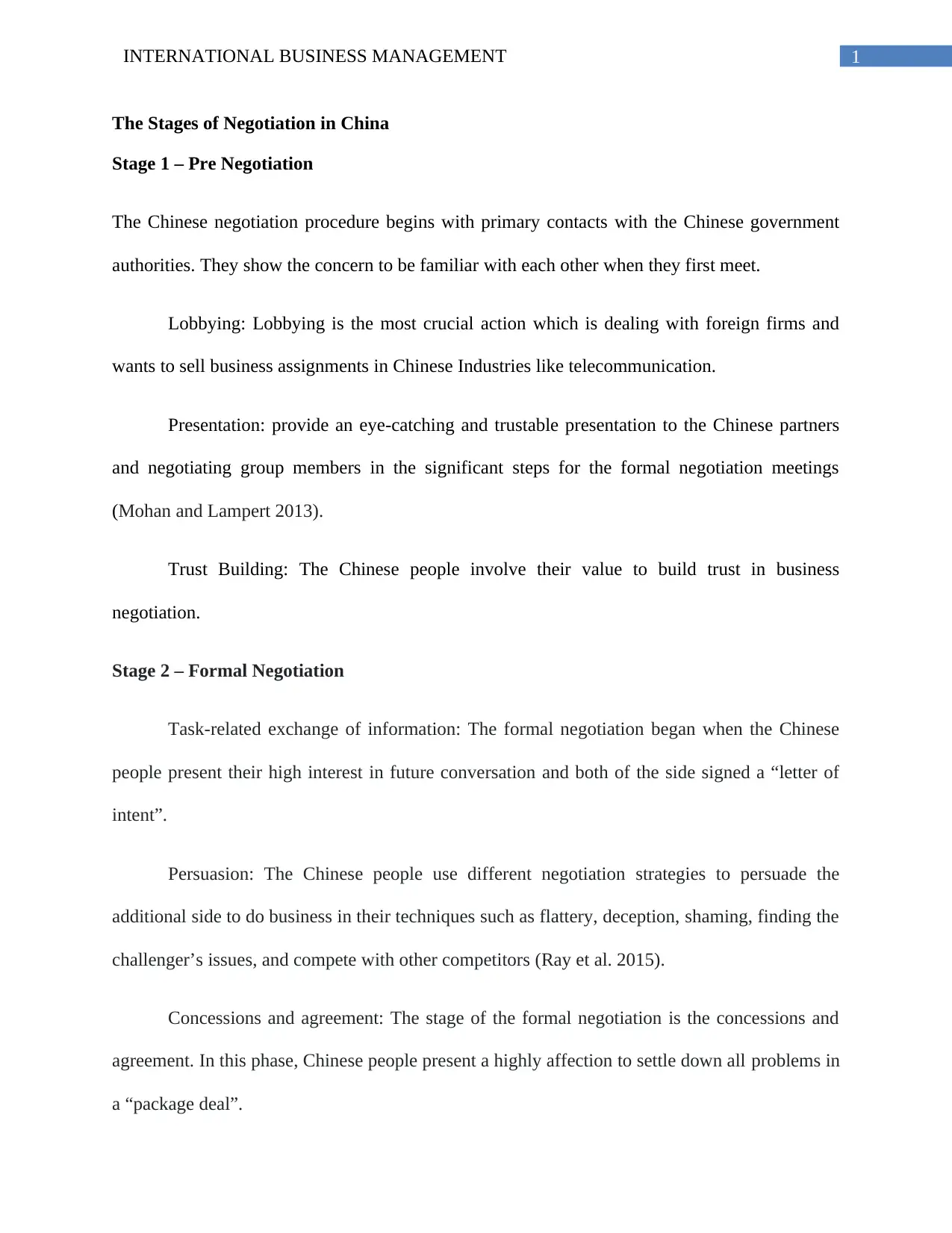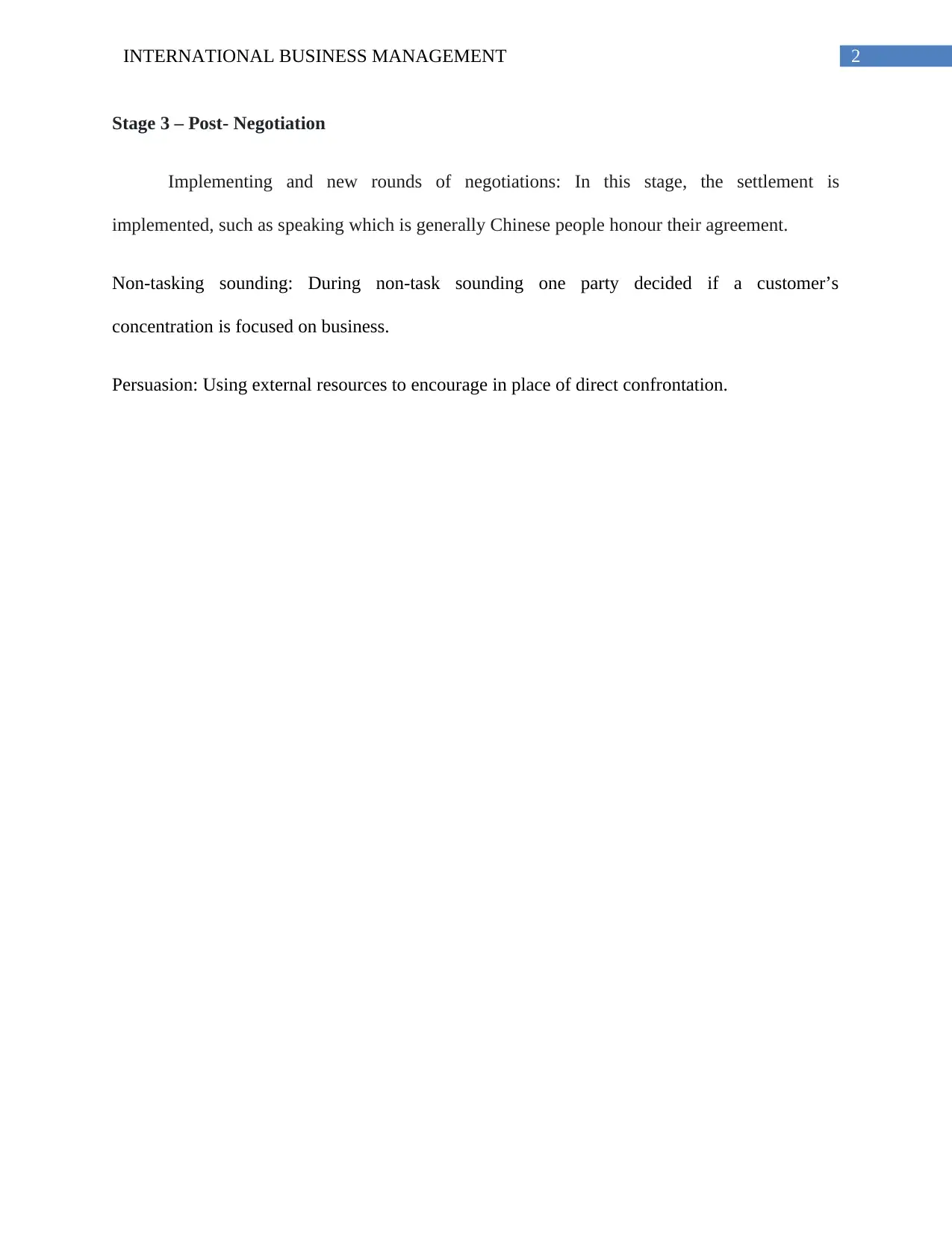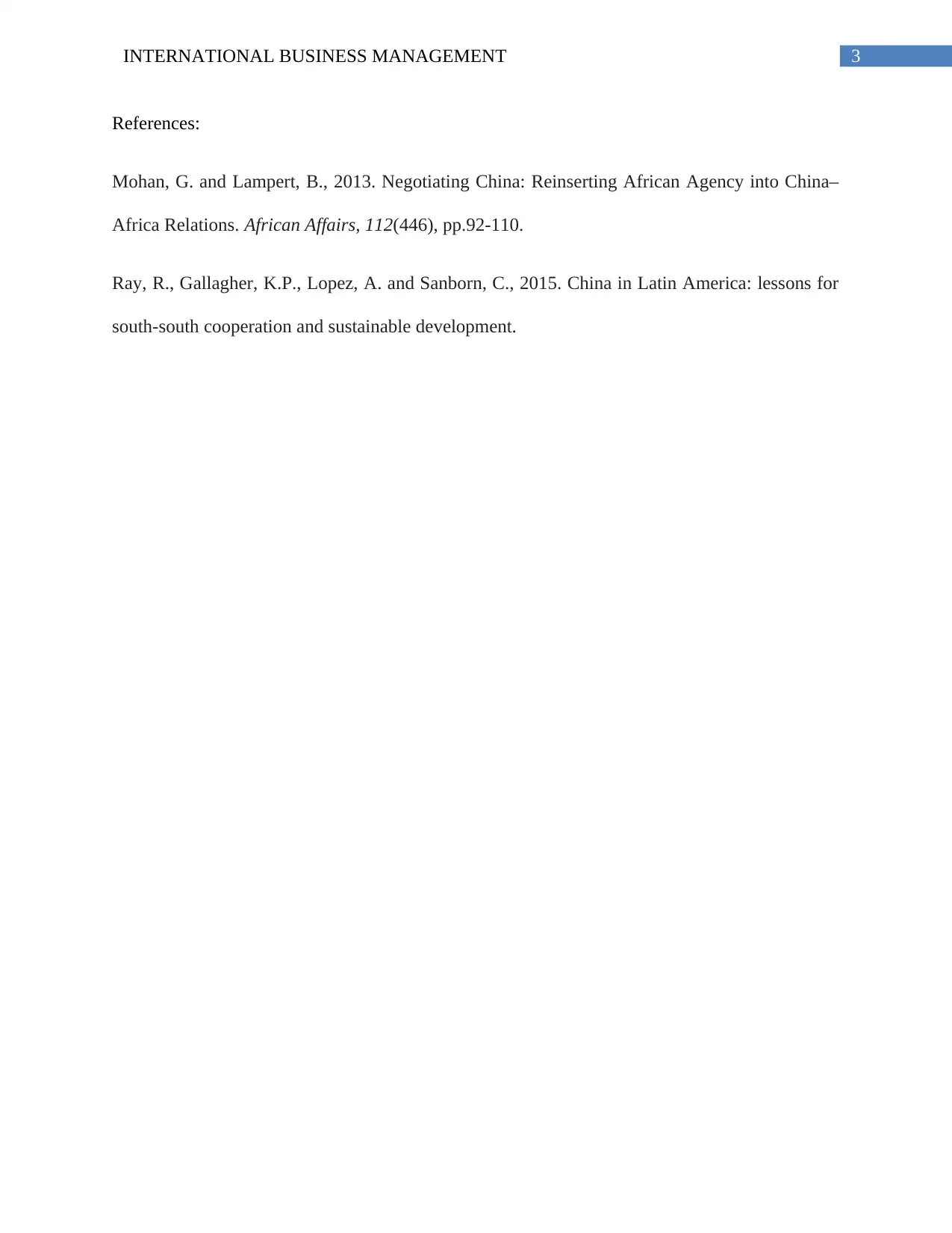International Business Management: Negotiation Strategies Report
VerifiedAdded on 2022/11/14
|4
|397
|62
Report
AI Summary
This report delves into the realm of international business management, specifically examining negotiation strategies within the Chinese context. The report outlines a three-stage process: pre-negotiation, formal negotiation, and post-negotiation. The pre-negotiation stage emphasizes establishing initial contact, lobbying, presenting a credible image, and building trust. The formal negotiation stage involves the exchange of information, persuasion tactics, and ultimately, reaching an agreement. The post-negotiation stage focuses on implementing the agreement and potentially engaging in further negotiations. The report also highlights the importance of non-task sounding and using external resources for persuasion. The references provided offer further insights into the topic.
1 out of 4






![[object Object]](/_next/static/media/star-bottom.7253800d.svg)